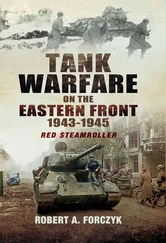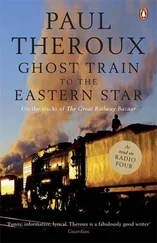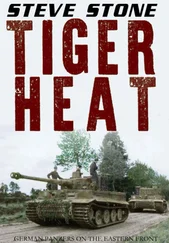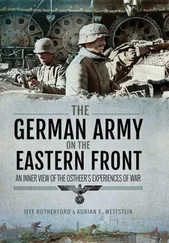Soviet military theorists such as Mikhail Tukhachevsky, Vladimir K. Triandafillov and Georgy Isserson had been assiduously working on a new military doctrine since the late 1920s . [7] , [8]This doctrine, known as Deep Battle ( glubokiy boy ), was partly inspired by J.F.C. Fuller’s Plan 1919 and mixed it with Marxist-Leninist thinking about protracted warfare.
Early on, the Red Army leadership recognized the imperative need to develop a tank force, but was reluctant to choose between the infantry support and cavalry schools. Instead, the Red Army codified its basic tank doctrine in Field Regulations PU-29, issued in October 1929. These regulations specified that PP tanks would provide infantry support, while DD tanks would push deeper into enemy rear areas to destroy their artillery. [9]The Red Army cavalry lobby, in the form of Marshall Semyon Budyonny, also managed to retain enough influence that PU-29 was written to include joint tank-cavalry Deep Operations ( glubokaya operatsiya ). At the same time, the Red Army established the Office of Mechanization and Motorization (UMM) to develop the tanks necessary to fulfill the doctrine spelled out in PU-29, as well as train and organize all mechanized forces. The first head of the UMM, Innocent A. Khalepsky, decided that the Red Army also needed a heavy breakthrough tank to penetrate fortified areas, so he recommended a 60-ton tank with two 76.2mm howitzers and a 37mm cannon. From this point on, Red Army doctrine pushed Soviet industry to concurrently develop light, medium and heavy tanks.
At the start of the First Five Year Plan (1928–32), Soviet industry was unable to build indigenously-designed tank engines or tank guns and barely able to construct a few dozen light tankettes per year. Since Stalin and the Politburo were more concerned about falling behind Western tank developments than domestic economic consequences, they arbitrarily doubled the number of tanks required by the Red Army and rushed technical development in order to field the largest number of tanks possible. Three tank design bureaux were established under the plan: OKMO and SKB-2 in Leningrad and KhPZ at Kharkov. An artillery design bureau in Gorky was also tasked with developing new tank armament. At Stalin’s behest, the UMM authorized numerous tank projects, many of which proved failures, but this also jump-started the Soviet tank industry. Between the pressure of fulfilling quotas established by the Five Year Plans and the personal consequences of ‘obstructionism,’ the Soviet tank design bureaux were forced to develop tanks that could be built quickly and in numbers, which would prove to be advantageous in a long war.
Through ruthless effort, Stalin’s regime was able to build up the Soviet Union’s defense industrial base at an astonishing rate and succeeded in producing over 5,000 light tanks under the First Five Year Plan. A generation of young Soviet engineers proved adept at using off-the-shelf components and designs acquired legally and illegally from Britain and the United States, while Soviet engineers took the idea of sloped armour from John Walter Christie’s innovative M1931 tank prototype and employed it on the BT-series light tanks. Soviet espionage was also successful in acquiring tank design information in Britain.
Despite negligible experience in armoured vehicle design and fabrication, Soviet engineers were able to move from the prototype stage to series production of the T-26 and BT-series light tanks within less than two years. Although Soviet engineers were forced to use foreign-designed engine components and armament in their first generation of indigenous tanks, the design bureaux in Leningrad, Kharkov and Gorky were also given some of the best engineering talent in the Soviet Union, who were tasked with developing indigenous engines and cannon for the next generation of tanks. In particular, the talented Konstantin F. Chelpan made excellent progress – with the backing of Khalepsky, the head of UMM – in developing a practical diesel tank engine, which would have enormous implications for armoured warfare on the Eastern Front in the Second World War.
Due to the success of the First Five Year Plan, the Red Army had sufficient tanks by 1932 that it could afford to create both an independent tank force and separate tank brigades for direct infantry support. Two mechanized corps were formed – three years before the Germans fielded their first panzer divisions. The mechanized corps were intended for independent Deep Operations, up to 250km in three days. While the T-26 was intended to fulfill the NPP role, the BT-series fast tank ( Bystrokhodny tank) was built for speed and mobility for the DD exploitation role. The Red Army formed separate heavy tank brigades with the new T-35 heavy tank and independent mechanized brigades to support the infantry and cavalry. During 1932–33, the Red Army began testing the Deep Battle concept in field maneuvers with the new tank units. When the Red Army had difficulty in actually conducting field exercises according to Deep Battle doctrine, the innovative Aleksandr I. Sediakin, deputy chief of the general staff, was put in charge of combat training and transforming the new doctrine into a practical reality. By 1934, Sediakin had developed a Deep Battle ‘playbook’ for Soviet commanders that instructed them how best to employ a combined arms attack using armour, mechanized infantry, artillery and airpower. Sediakin and his staff intensively studied and tested Deep Battle doctrine, using the mechanized corps as test beds, and one of his crucial findings was the logistical difficulties of getting fuel to tank units that achieved a deep penetration. The Military Academy of Mechanization and Motorization (VAMM) in Moscow also worked to train battalion and regimental-level armour leaders in the new doctrine. In 1936, Deep Battle became the official doctrine of the Red Army in Field Regulations PU-36. It is important to note, however, that Sediakin’s ‘playbook’ approach to Deep Battle was in line with the Marxist preference for prescriptive training, which encouraged junior leaders to follow a checklist by rote, rather than employ initiative on the battlefield.
In contrast to the frenetic pace in the Soviet Union, tank development in Germany did not begin in earnest until 1934 due to the restrictions of the Treaty of Versailles. It took considerably longer for the German military leadership to develop a common picture of how best to use tanks, and even though Adolf Hitler became enamored of the potential of tanks, the creation of independent panzer units was initially opposed by a number of senior leaders, including Generaloberst Ludwig Beck, chief of the Generalstab des Heeres . Generalleutnant Oswald Lutz (Inspector of Motor Transport Troops) and his outspoken chief of staff, Oberst Heinz Guderian, became the primary advocates of an independent armoured force. Eventually, Lutz and Guderian successfully made their case and when Hitler authorized the re-branding of the Reichswehr as the Wehrmacht and expansion to thirty-six divisions in June 1935, three of the new units were designated as panzer divisions. Guderian, a former signal officer with no real command experience, was selected to command the 2.Panzer-Division. However, Beck and his operations officer, Oberst Erich von Manstein, maneuvered to create an alternative to the independent panzer divisions by recommending the creation of sturmartillerie units to provide direct support to the infantry. Manstein proposed providing each infantry division with a battalion of Sturmgeschütz (assault guns), based on a medium tank chassis. Thus, the Third Reich ended with its armoured assets divided between panzer and sturmartillerie units, plus the panzerjägers, who also eventually acquired self-propelled tank-destroyers.
Читать дальше







![John Stieber - Against the Odds - Survival on the Russian Front 1944-1945 [2nd Edition]](/books/405234/john-stieber-against-the-odds-survival-on-the-russian-front-1944-1945-2nd-edition-thumb.webp)




